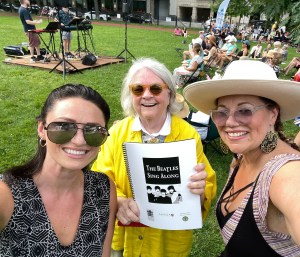Whenever I’m asked where I’m from, I hesitate. It takes a moment to wrangle shame to the ground long enough to scare up the truest truth to tell. The aftereffect of my parents’ inability to halt their rodeo boozing long enough to pay the rent accounts for a long trail of midnight moves.
Annapolis, Maryland; three different homes in Washington DC, two in Terre Haute Indiana, a hotel in Indianapolis, two homes in St.Louis, a hotel in Chicago, homes in Kenilworth, Wilmette, and Lake Forest, Illinois, two cottages in Sea Girt, New Jersey, two New York apartments, a Williamsburg, Virginia boarding school and back to Sea Girt.
At that point, after fourteen or fifteen schools, with a lick and a promise, I barely graduated from Manasquan high school. I spent the last year drinking and smoking in the school parking lot with a posse of flirty no-goods. I dropped out of Monmouth College, married, had a baby, moved to Vermont, divorced, got addicted to loco weed, moved to Point Pleasant, New Jersey, married again, joined a cult, divorced again. When I was twenty-nine years old I moved with my son back to Chicago, where I’ve mostly lived for forty-seven years as a tenderfoot, sober alcoholic.
What do I say? I like to say I’m from the Midwest, like Bob Dylan, with God on my side.
Oh my name it ain’t nothin’
My age it means less
The country I come from
Is called the Midwest
My three sisters say they are from New Jersey as if it has all the romance of Bruce Springsteen’s Jersey Girl.
So don’t bother me cause I ain’t got no time
I’m on my way to see that girl of mine
Nothing else matters in this whole wide world
When you’re in love with a Jersey girl
There are a lot of cool people at the Jersey Shore. I had a stable of romantic encounters like Springsteen’s Jersey Girl—on the beach, in the backseat of Mustang convertibles, in public bathrooms of raucous bars. Jersey boys drink beer. Morning. Noon. And Night. Not me. I drank gin. They have mononucleosis and venereal diseases. They drive drunk and kill you with sarcasm. And still they seek the girl from the right neighborhood, the right school, and the right family. I’m lucky I made it out of there alive.
In the Midwest of my girlhood, I knocked on neighbors’ doors for a ride to school when I couldn’t wake up my mother or our car was out of gas. They helped me look for my missing dog, Lefty, in a snowstorm. When that rodeo was dusting up inside my home and danger was afoot, they taught me to hide in trees.

When I arrived back in Chicago to a corral of footloose midwestern strangers in the 1970s, I expected bound-for-glory hellos and found them. A friend from fifth grade I hadn’t seen in sixty-five years read my book recently and sent me a note: “you always belonged to us.”
That’s the Midwest. Where I’m from.


 on his head within sight of all the bathers and sun worshipers around the pool. I sensed, in that instant, that this, my favorite spot in all Chicago, would be tainted for the rest of my life.
on his head within sight of all the bathers and sun worshipers around the pool. I sensed, in that instant, that this, my favorite spot in all Chicago, would be tainted for the rest of my life.

